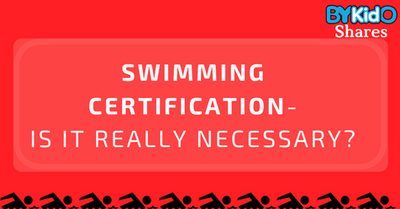It might be scary when your child experience speech delay, but when does it point to something more serious?

Like any other major milestones in child development, the ages in which kids start understanding and later saying words can vary from child to child. As a result, it can be difficult for parents to gauge when their child isn’t just taking a little longer than usual to develop their speech skills, and they may not realize that their child may have a developmental problem.
In general, babies that don’t vocalise or respond to sound should be brought to a doctor for examination right away. In the first two years or so of your child’s life, there are also many telltale signs to watch for that may point to a speech delay, such as:
- Preferring to communicate with gestures rather than vocalisations
- Difficulty imitating words and sounds
- Using only some words or sounds repeatedly
- Raspy, nasal, or otherwise unusual-sounding voice
- General inability to use oral language for communicating anything more complex than immediate needs
It’s also best to see a doctor if your child’s speech is more difficult to understand than is typically expected for that age. As a general rule, parents and regular caregivers should be able to understand about half of a child’s speech by the time the child is 2 years of age and around 70% by the time the child is 3. By the time the child hits 4 years of age, their speech should be comprehensible even to people who don’t know them well.

Speech therapy can help improve speaking and language skills in children with speech delays. Qualified speech therapists can also advise parents on what they can do at home to assist their child’s speech and language development. Here are five simple but effective ways to help a child with a speech problem:
Prioritise Communication
Communicating regularly with your child is one of the most important things you can do to help develop their speaking skills. Feel free to talk to your child about the things you’re doing, what you see, how you feel, and anything you experience throughout your day, even if they can’t talk back yet. You can also try naming the everyday things that you and your child encounter, like foods at the grocery store or pieces of furniture around the house.
One useful rule of thumb is to use simple phrases as long as those your child uses or only slightly longer. For children that aren’t talking yet or only using one word at a time, for example, single words and two-word phrases are best. It’s all right to keep it simple, but avoid nonsense words and baby babble. Don’t be afraid to repeat yourself multiple times, as repetition will also help your child learn.
Expand on Your Child’s Utterances and Gestures
All children begin communicating in very simple ways that grow increasingly sophisticated with time and practice. Expansion is a great way to gradually help your child develop their speech. This strategy involves taking anything your child says and adding a word or two to make it a phrase. For example, if your child says “dog,” you could supply phrases like “my dog,” “brown dog,” “walk dog,” or anything similar. Use several examples to show your child how one word might combine with other words to produce different concepts.
You can also use expansion with children who aren’t speaking yet by building on their gestures. Whenever your child points at an object in an attempt to communicate with you, for example, try naming the thing they’re pointing at. If their gesture gives you the impression that they’re feeling a particular emotion, try naming that feeling for them.
Accompany Spoken Words with Sign Language
Studies show that alternative means of communication like sign language don’t hinder the development of speaking skills in kids with developmental disabilities. In fact, in many cases, using sign language can encourage kids to talk more. Signing can serve as a useful stepping stone to help these children experience and learn more about the power of communication. From there, many children will find it easier to switch out signs for spoken language, as they eventually come to consider the latter a more effective communication medium.
There are many ways to teach basic sign language or baby signs to your children. You could read books, watch videos online, or purchase informative DVDs on the subject. Purchasing premade sign language flash cards or making your own to teach your child could likewise be helpful.
Build Their Receptive Vocabulary
A child’s receptive vocabulary contains all the words they’re able to understand, even if they don’t or can’t say those words by themselves yet. Working to expand your child’s receptive vocabulary will go a long way towards helping them talk better later on, as children have to understand words in order to use them.
One way to boost your child’s receptive vocabulary involves saying the name of a person or object in your immediate environment and having your child point to the thing you mentioned. If you ask, “Where’s the window?” for example, you can then help your child point or look toward the nearest window. Do this consistently and your child will soon have a healthy receptive vocabulary full of different words.
While speech delays can be concerning for parents, children can usually overcome them with therapy, parental support, and constant practice. Recognising and treating speech delays early is the best way to encourage healthy speech and language development in your child.







